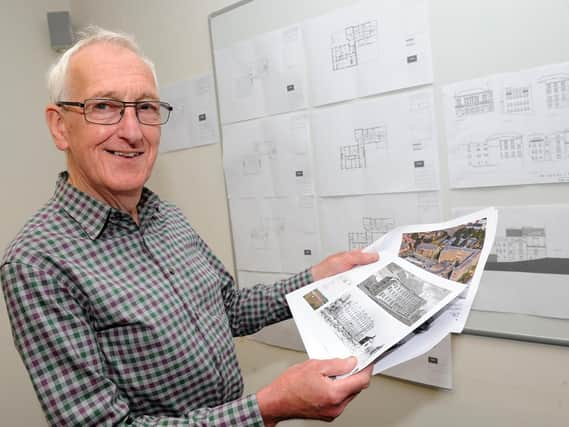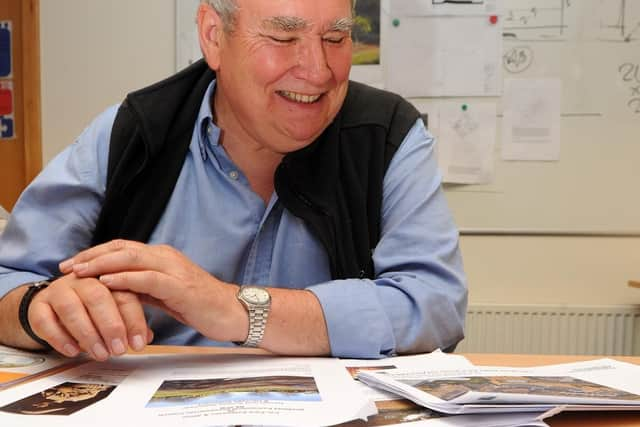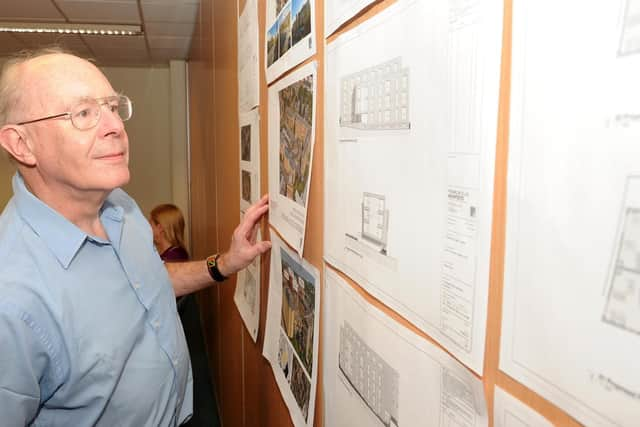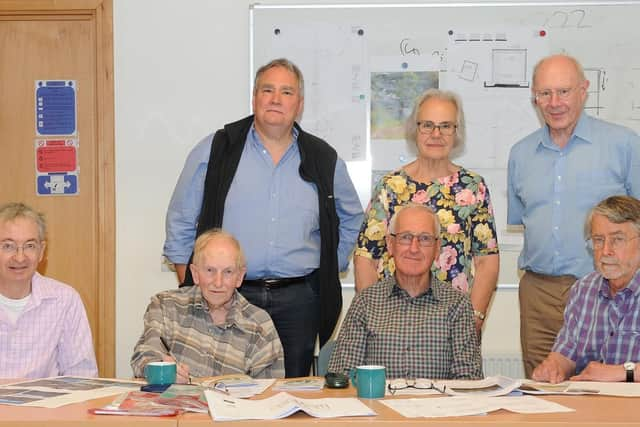How Sheffield's conservation advisors are keeping heritage up to date


But when proposals affect historic places of great sensitivity, a lot more consideration and careful handling is required.
The Sheffield Conservation Advisory Group has been running continuously for nearly 50 years and is, so far as members can tell, a rare proposition in Britain - a committee set up by the council that offers independent advice on how the city's heritage assets should be treated.


Advertisement
Hide AdAdvertisement
Hide AdIt is not a campaigning body, but members - all volunteers - regularly take up causes themselves through the many organisations they represent, from the Landscape Institute to the Twentieth Century Society.
"I always say the city council is very well served by the group of people that have met here regularly, month in, month out," says the chair of CAG, Dr Philip Booth, a retired town planning academic.
At the most recent meeting there were three applications to consider and a 'long list of updates' including some 'pretty critical things'. It was the first time the panel had gathered since an arson attack on Sheffield's oldest pub, Carbrook Hall in Attercliffe, a Grade II* listed building dating back to 1176.
"That's a very great worry," Philip says. The incident was, he observes, a perfect case study of 'what can go wrong'.


Advertisement
Hide AdAdvertisement
Hide Ad"And of course it's extremely difficult for anyone to do anything about it. Unless you're actually there at 2am, or whenever it was. It seems that, actually, not a great deal of damage was done. It could be a lot worse."
Loxley Chapel - built in 1787 - is another threatened listed building that has made repeat appearances on agendas over the years. It has slid into a state of dereliction since closing in 1993 and went up in flames in 2016.
"It's the same pattern repeated," says Tim Hale, who represents the Sheffield Chamber of Commerce. His career has involved chairing tool rental firm Champion Hire - consequently he has 'always tried to bring a commercial perspective' to the committee when costly amendments are suggested to schemes.
"One of the things developers often say is 'We can't afford to do it'. We get to cover a lot of interesting buildings. We tend to deal with the tricky ones."


Advertisement
Hide AdAdvertisement
Hide AdOne benefit of the group, he thinks, is the wealth of experience and collective knowledge members bring. "Some have been here for a really long time - 20 or 30 years - so you can see the same names coming up again, and the same buildings, Loxley Chapel being a case in point. People don't do anything with them. They apply for planning, it gets refused and they just sit there."
The crumbling Don Sawmills on Savile Street and the Old Town Hall, on Waingate, are particularly worrying, adds Tim. "There's a national problem, in my opinion. The ownership of listed buildings should be an asset - there should be tax advantages - but they aren't, they're a responsibility and a liability. And it's completely the wrong way round."
Also on the panel is Graham Hague, who represents the Victorian Society as well as the South Yorkshire Industrial History Society, which meets at Kelham Island.
"For example, last night we were discussing the Hoyle Street cementation furnace, a unique structure virtually in Britain," he says. "Obviously we'll deal with how that's redeveloped."
Advertisement
Hide AdAdvertisement
Hide AdMeanwhile, architect Andrew Shepherd, of the Society for the Protection of Ancient Buildings, has practiced in Sheffield for 40 years, specialising in conservation work. "I repair old buildings, find them new uses and stuff like that. I've been doing this for a long time and think I know the basic principles fairly well," he says with a smile.
The breadth of representation is extraordinary. Andrew Tabor is associated with the Hunter Archaeological Society, founded in 1912. "We have a considerable interest in everything that happens in Sheffield, and not just in the old remains you might dig up at Whirlow or something - we're into more modern things as well."
There's also retired architect Dr Roger Harper, of the Ancient Monuments Society, Liz Godfrey from the Sheffield Civic Trust who co-ordinates the city's Heritage Open Days and Howard Greaves, vice-chairman of the Hallamshire Historic Buildings Society.
The HHB blog, which replaced the group's magazine, The Cruck, in 2016, is a fount of information. The owner of a house in Sharrow, the blog reports, was recently fined £5,000 for having 'horrible plastic windows' on their property when frames 'more in keeping with the conservation area' were required.
Advertisement
Hide AdAdvertisement
Hide Ad"We try and keep an eye on things," says Howard. "People often ring us up to tell us what's going on."
Council conservation officers Zoe Mair and Ruth Connelly select applications for discussion. Their choices are usually the most thorny proposals; trivial matters would not pass muster, says Zoe. "We'd know the time would be best spent on other things."
Philip was once a conservation officer himself, in the City of Westminster, and used to be CAG's link with Sheffield University, his former employer. Now the universities are represented by Dr Jo Lintonbom, the group's deputy chair, and Hallam lecturer Karen van Vliet.
Former Town Hall secretary Patrick Burns takes the minutes; meetings are not open to the public, but people can attend by invitation.
Advertisement
Hide AdAdvertisement
Hide AdAs chair, Philip has tried to attract younger members, but availability is an issue - the retired, he has found, are more likely to have free afternoons to spare.
Several times, he points out, the group has nearly been disbanded. "In each case we have said 'You would be losing something very important'. The group is here to offer advice and a comment, and indeed to speak truth to power on occasions."
So is CAG a force for good?
"If you're a builder you might say not," says Tim, wryly. "But in reality Sheffield tries to be sensible in improving planning applications that are good, and not approving ones that are bad."